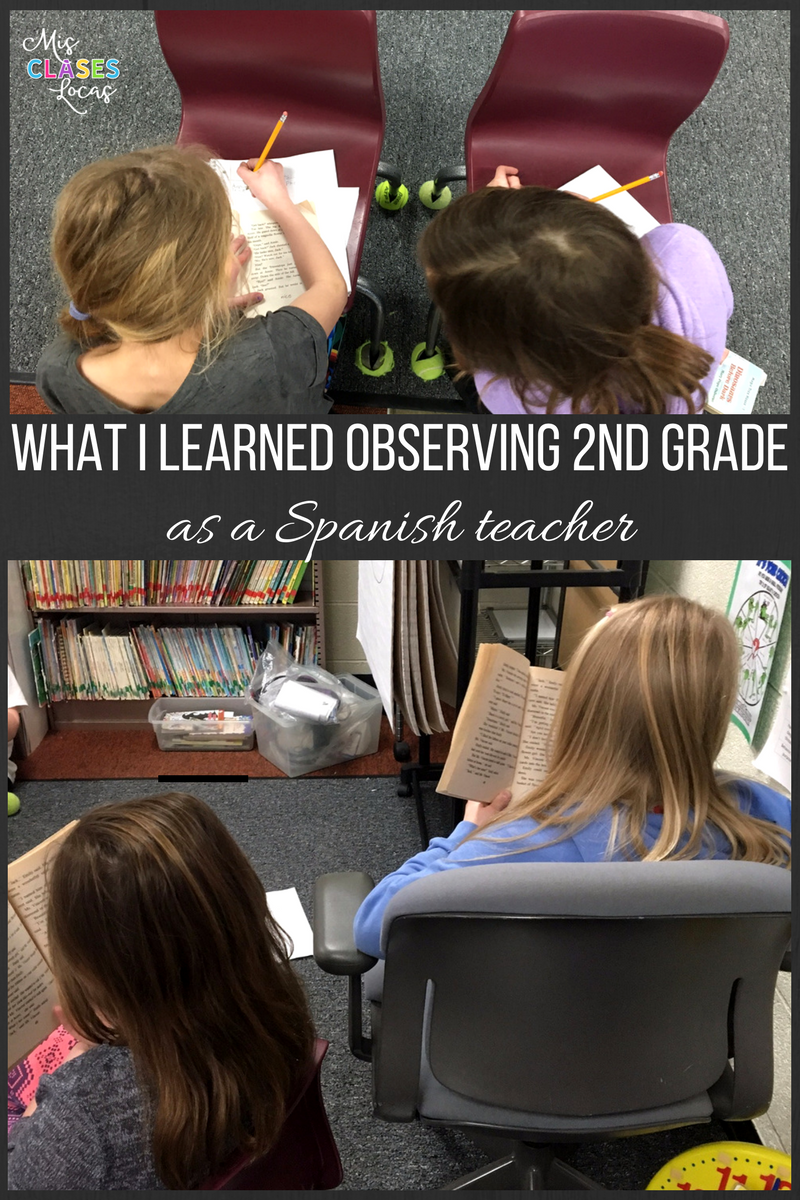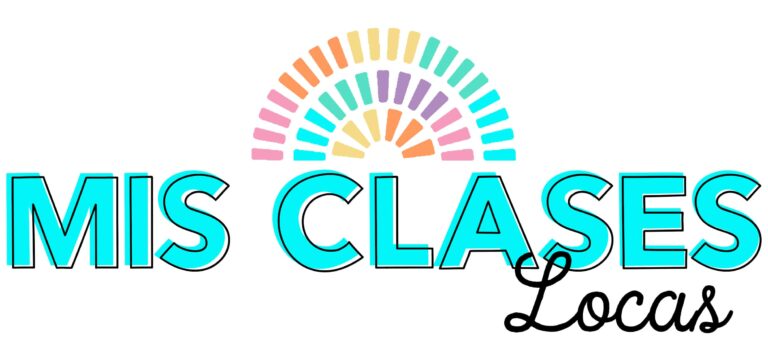This week I had the amazing opportunity to observe a 2nd grade class during literacy. With our TLC (teacher leadership) program this year, one day a month we get a chance to observe another class for one class period, as well as have others observe us. (Next year I hope to get to go to another school to see Spanish using CI). Since I am a department of one and can not observe any world language teachers here, I figured the next best thing was elementary literacy. At our tiny school, I do not even have to go outside to get to the connected Pk-5 building to get to second grade.

Classroom management
It is evident that veteran teacher Mrs. R is a master at her craft. Her classroom runs like a well oiled machine with every student knowing exactly what is expected of them and what their job is. You can tell she has spent a ton of time setting expectations, reinforcing norms, and making sure that their classroom family understands that they are all good at different things. The hour literacy block seemed to fly by, with students completing many different tasks. These tasks included: alphabetizing their spelling words, being pulled in pairs to work with the class para educator to work on “Signs for Sounds,” reading their specific leveled book with their partner, and being pulled with partner to discuss the characters in their book with the teacher. They had carpet time before where they discussed their jobs and what they would each be working on, then she set them free.
Differentiation
Her differentiation was awe inspiring with every single student working at their own level. For example EVERY SINGLE student had a separate spelling list. While I would love to be able to differentiate this much, at the high school level with four separate preps and six separate classes, it would be a logistical nightmare. However, I learned speaking with her that there are ways that I could incorporate similar strategies.
For example, she had students paired with someone at their reading level working on the same book. She said that they spend a lot of time at the start of the year stressing how everyone has different skills (Kyle can throw a baseball and I can not). This helped them to accept the fact that some pairs were reading chapter books, and others were reading a level one look I can read picture book. Even though she picked the level, they were still given a choice of which book in the level appropriate series to read.
How can I apply this to my Spanish class?
- With literature circles, I can break students into proficiency levels and then in each group give them a choice of two books at their level. (I usually pick books all at a similar level and let students rank their choices). to do this, I need to do a better job at having students keep their own data of proficiency performance, so they are self aware of where they are and what they need to do to move up.
- Have a more narrow focus while students are reading in literature circles. For the entire book their main goal is working on character analysis. They have a character web where they add each new person, with the reverse side a web with the main character in the center, with characteristic surrounding it. When students were brought back to discuss with the teacher, she asked comprehensible, higher order leading questions, which required students to relate and reflect on the characters in the book. She made sure to personalize asking questions like, “would you be friends with this person in real life?”
- I need to do more small group reflection checking in with students on their understanding of novels. I now want a bean shaped table to sit down and talk with small groups.
- I should better utilize the Para Educator I have. I know it will take more work to prepare specific tasks that that do not require Spanish that she can assist small groups with, but it would be very worth it. I honestly never thought about having her work with students other than those with IEPs in my room.
Other random ideas
- I would love to start class with “carpet time” like she does just chatting.
- I need to bring back stations. For a “fun’ station they sometimes have a themed art craftivity, but to do it they must READ the directions at the station. (She will not explain this one out loud). This would be a great way to sneak in reading comprehension with something fun at a station!
- Have a fun writing workshop to get students excited about free writes. Have students use story webs to brainstorm ideas, and then let them creatively write.
- Teach students to make a visual picture in their brain as they read.
- Remind students of their reading strategy tool belt and the skills they can pull from as they read.
 |
| Reading Strategy Tool belt from Mrs. R |





